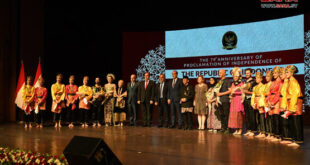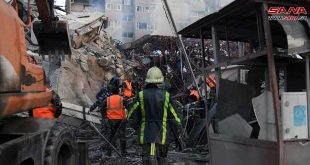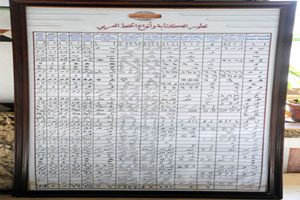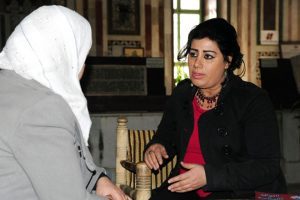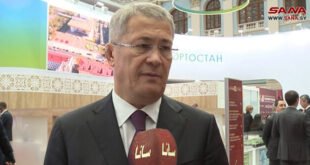Damascus, SANA – Visitors of the Arabic Calligraphy Museum in Damascus are invited to embark on a fascinating discovery journey into the evolution of Arabic calligraphy and learn more about the creative Damascene calligraphers throughout the ages.
Located just steps away from the northern gate of the Umayyad Mosque in the Old City of Damascus, the ancient archeological building previously known as al-Madrasa al-Jaqmaqiyeh (al-Jaqmaqiyeh School) still stands narrating the history of more than 750 years.
Scripts written with Different styles and forms of Arabic calligraphy, some of which date back to the pre-Islamic period, in addition to hand-written Quranic verses and gravestones with verses craved on them decorated the courtyard of the Museum narrating the development of Arab calligraphy.
Several calligraphy tools, pens and ink wells as well as three copies of letters written by Prophet Mohammed, peace and prayer be upon him, to kings and rulers were also showcased.
In a statement to SANA Cultural Bulletin, Archeologist Ilham Mahfoud said that the building covers an area of 280 square meters and it dates back to the Mamluk era, adding that it is characterized by its arches, lobbies and Ajami roof which includes floral and geometric motifs intertwined together.
She added the main purpose of transferring the School into a museum for the Arabic Calligraphy is to highlight the Syrian calligraphers’ creativity, indicating that the Museum shed light on different calligraphy types such as Naskh (meaning copy), Farsi, Riq`a and Diwani and provide a timetable tracing the development of Arabic alphabet.
Mahfoud stressed the Directorate-General for Antiquities and Museums’ keenness, since the very beginning of the war on Syria, to activate the role of this museum in reviving the Arabic Calligraphy through organizing relevant events, exhibitions, lectures, symposiums and training courses in cooperation with creative Syrian calligraphers.
R.Raslan/Ghossoun
 Syrian Arab News Agency S A N A
Syrian Arab News Agency S A N A

